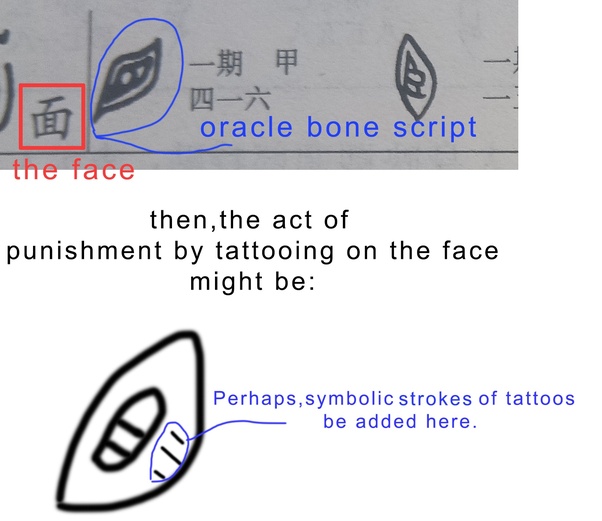Because it is a fire related one, in China, this explanation is widely accepted. And if you search it on Google, you’ll likely find that it is associated with “the colour produced by fire”, “chimney”, etc.
However, there are indeed other theories. For example, in one of the answers to this question, a gentleman provided another thorough explanation, which you can read in detail.
I’m not saying that this gentleman’s explanation is incorrect, nor “this character must be related to fire”. I mean, it is commonly accepted that “this character is related to fire”. Here is my view, which may help a little bit.
First, my doubts about this gentleman’s explanation:
- 1. As far as I know, no oracle bone script from the early-mid Shang dynasty has been discovered or recognized for the character “黑”. The earliest known form is the bronze script, which dates back to the mid-late Shang dynasty or the Zhou dynasty. As this gentleman pointed out, it looks like these,

Given the time span, the evolution of characters, and the way new dynasties historically handled the legacy of former ones, we can’t take the bronze script as the origin form of the character “黑”. Earlier forms, maybe oracle bone script, may exist.
- 2. Now let’s see the bronze scripts in the pic, it appears that the character “黑” is related to the human form, a point on which, no disagreements, I guess. As this gentleman explained, if this bronze script was created based on “the act of punishment by tattooing on the face”, I personally find it unconvincing. Let’s take the character “刖” and “劓” for an example,

The two characters were not created with the “人/大” radical but were specifically based on the shapes of body parts or human characteristics. Therefore, if “the act of punishment by tattooing on the face” were to inspire a character(in Chinese way), it would likely be related to “面” (face). Like,

- 3. However, the “墨/黥刑” does indeed originate from the bronze script of “黑”. Well, I guess, this may because of the Zhou dynasty’s rituals(周礼) and the customs of neighboring tribes. In ancient times, especially the southern tribes had the custom of facial tattoos. The Chinese then regarded facial tattoos as symbols of barbarism, so it made sense to use them to humiliate and punish criminals. After all, in those times, even a haircut could be seen as a great insult. So it’s possible that this character“黑”, originally inspired by the image of tattooed “barbarians”, It then evolved into the “黑(black)” and to represent the “墨/黥刑” punishment.

I mean this bronze script character “黑” is definitely a concept related to people, no one can deny it, just like these characters, which clearly represent concepts associated with humans. Meanwhile, the “火” looked very different thousands of years ago. Like,

For short, my meaning is that the character “黑” might be created based on the image of tattooed “barbarians” and later came to represent the punishment of “墨/黥刑”, rather than being created directly to represent the act of punishment by tattooing on the face itself.
Now, why the common view is “this character is related to fire”?
So far, any explanations on this character were just theories. And, such theories are usually marked as “疑…..(suspected that…)” or “依…..说(According to someone…)”. The common view “this character is related to fire” originates from a very famous dictionary “说文解字” from the Han dynasty. So, think about this,
modern Chinese people can infer what Han dynasty China might be like 2,000 years ago based on present days’ Chinese culture, customs, and historical records that still exist. Following the same logic, couldn’t people in the Han dynasty infer what Shang dynasty China might be like 2,000 years before their time based on their own culture, customs, and historical documents? In other words, who would be more accurate? Modern Chinese studying Chinese culture from 4,000 years ago, or Han dynasty Chinese studying Chinese culture from 2,000 years before them?
So, you see, regarding Chinese culture, history, or anything related to ancient days, sometimes there simply is no definitive answer.
Or, just wait for new archaeological discoveries are made and new historical materials are uncovered.